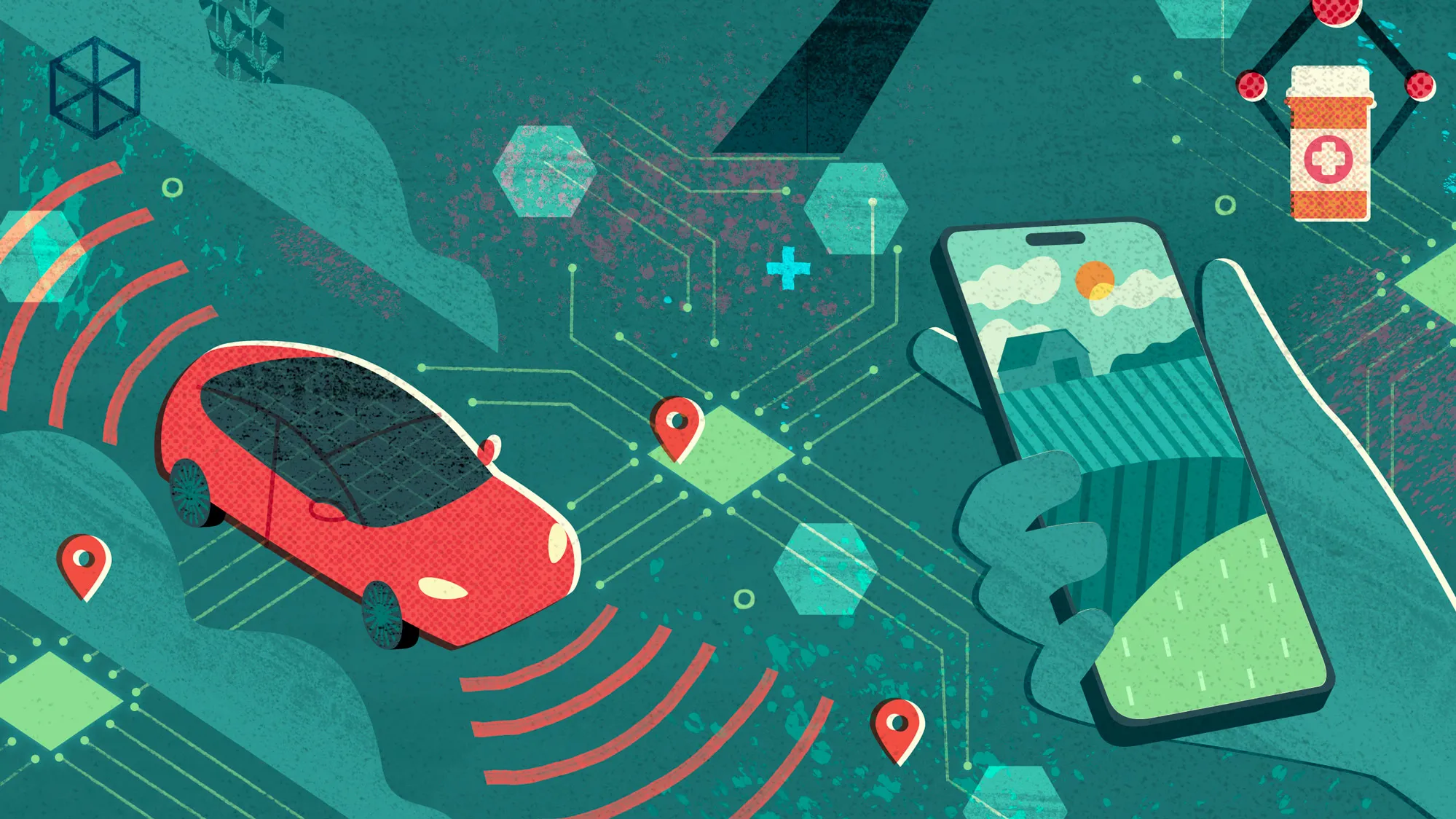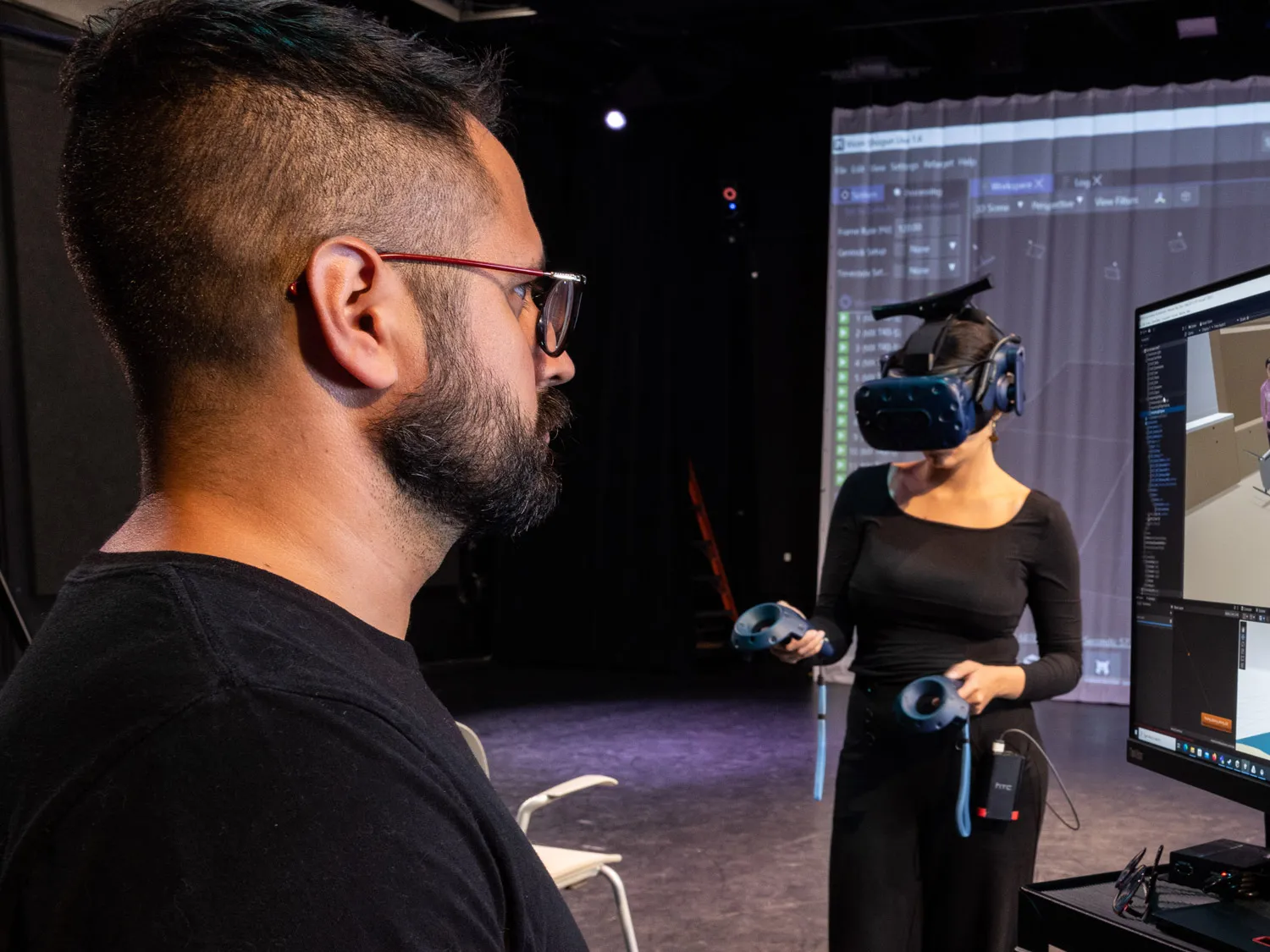O-H! A-I! Our researchers are leading in this field
When it comes to using artificial intelligence to problem-solve in agriculture, medicine, space and more, Ohio State is innovating.

(Illustration by Dante Terzigni)
Despite all the talk about artificial intelligence and its possibilities to transform our lives, the field is just getting started. That’s why it’s so significant that Ohio State is out front as one of the nation’s pioneers in AI, says Peter Mohler, acting president of the university and executive vice president of research, innovation and knowledge.
Look no further than the fact that in 2021 Ohio State was awarded two of 11 National Artificial Intelligence Research Institutes funded by the National Science Foundation. Each institute received $20 million. The university could not have secured them without faculty who were already at the top of their fields in AI, Mohler says.
“Some people may not realize the magnitude of artificial intelligence research that Ohio State is involved in. We’ve really been a part of building this field,” he says. “Our faculty have been thinking about AI and working on AI for a long time.”
And they don’t wait around to apply their research findings, Mohler says.
“One of the unique features we have is that we work so closely with external partners like Intel and Honda,” he says. “A lot of the work we do in AI is not just an academic exercise, but an effort to apply solutions to complex problems.”
Mohler says one of the impressive facts about AI at Ohio State is the wide range of research. Here are four recent studies that show the breadth of our work.
Creating better medicines
Most drug discoveries today rely on chemists’ knowledge and experience to select and synthesize the right molecules to create medicines. Xia Ning, professor of computer science and engineering, led a team that used AI to supercharge the process. Rather than manually sifting through millions of potential chemical reactions to produce molecules needed for medicine, their AI framework can cover an enormous range of such reactions in minutes. “Our aim was to use AI to accelerate the drug design process, and we found that it not only saves researchers time and money but provides drug candidates that may have much better properties than any molecules that exist in nature,” Ning says.
Tackling the mysteries of space
One of the great advantages of AI is its ability to process and analyze huge amounts of data. Astronomy is one field where this ability is highly prized. Ohio State astronomers turned to machine learning techniques to identify and classify variable stars — celestial objects whose brightness waxes and wanes over time, especially if observed from Earth. In a recent study, they were able to identify 116,000 new variable stars. “If you want to look at millions of stars, it’s impossible for a few humans to do it by themselves. It’ll take forever,” says Tharindu Jayasinghe ’20 MS, ’22 PhD, co-author of the paper stemming from the study and an Ohio State presidential fellow. “So we had to bring something creative into the mix, like machine learning techniques.”
Boosting agriculture
Ohio State researchers developed an AI tool that analyzed photos, taken by drones, of five Ohio soybean fields. The goal: to find out which plants were defoliated and which were healthy. This new tool, called DefoNet, may someday help farmers more accurately determine crop health and make more informed decisions about how to deal with disease and pests that threaten to reduce yields. “In the coming years, we’re going to have to increase food production substantially in order to just meet the demand,” says Christopher Stewart, associate professor of computer science and engineering and co-author of the study. “The idea behind digital agriculture is using computer science and other technologies to make sure that each planted seed is grown as effectively as possible.”
Vacation photos for conservation
Scientists are using AI to analyze photos of wildlife to identify and track individual animals and offer insights into their movements and population trends. “We have millions of images of endangered and threatened animals taken by scientists, trail cameras, drones and even tourists,” says Tanya Berger-Wolf, director of the Translational Data Analytics Institute. “These images contain a wealth of data that we can extract and analyze to help protect animals and combat extinction.” Berger-Wolf is one of the leaders of a new field of study called Imageomics, in which scientists use images of living organisms as the basis for understanding biological processes of life on Earth. The NSF also awarded Ohio State and Berger-Wolf $15 million to create a new Imageomics Institute.



